128 THE 20TH CENTURY GUNDOG
THE 20TH CENTURY GUNDOG
by David Hancock
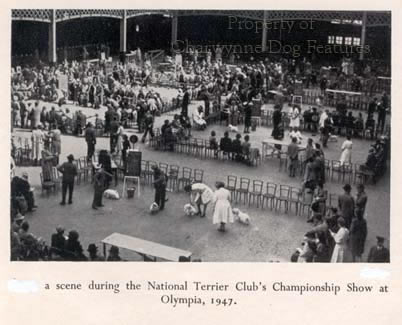 “With the almost total suspension of breeding activities during the 1st World War period (1914-1919) breeders had a very uphill task to re-establish the breed, but they are deserving of the highest praise and admiration for their efforts, as with the very scant material to hand, in the course of a very few years the Cocker was flourishing more than ever and had gained its present popularity by peaceful methods, by steady progress, and did not burst on the world with a flourish of trumpets, but step by step consolidating its position steadily as it went along.”
“With the almost total suspension of breeding activities during the 1st World War period (1914-1919) breeders had a very uphill task to re-establish the breed, but they are deserving of the highest praise and admiration for their efforts, as with the very scant material to hand, in the course of a very few years the Cocker was flourishing more than ever and had gained its present popularity by peaceful methods, by steady progress, and did not burst on the world with a flourish of trumpets, but step by step consolidating its position steadily as it went along.”
HS Lloyd, writing in his The Cocker Spaniel, Our Dogs, 1924.
“The effect of the War is easily seen in the registration figures. In 1942 and 1943 there were only two dogs registered, and the whole decade did not average 10 per annum. Challenge certificates were suspended with dog shows in mid 1939 and the last field trial was held in 1938. It was 1948 before the Field Spaniel Society was able to meet again and we owe much to those who gathered then and by careful breeding from the few dogs left, raised registrations as high as 45 in 1950.”
Roger Hall Jones, writing in The Complete Book of Gundogs in Britain, Barrie & Jenkins, 1974.
“If in the last fifty or sixty years hunting conditions have changed so also have shooting conditions altered. Before the advent of the reaping machine and latterly the binder and reaper, a Pointer or Setter was almost a sine qua non to the man who loved his gun. Now, alas, how different! Except in a few cases, and those mostly over the Border, there is practically no use for those fascinating dogs, for of all Gundogs, there are none, perhaps, that appeal more to the lover of all that is best in a day’s shooting.”
Lt Col GH Badcock, writing in his The Early Life and Training of a Gundog, Watmoughs Ltd., 1931.
“All the gundogs have ample opportunities of showing their worth at field trials, many of which are held in the course of a season. The first of its kind took place at Southill in Bedfordshire in 1865, and the numbers gradually increased, but the greatest expansion took place after the Great War. The general effect has been to raise the working level of these dogs, to produce a degree of efficiency that was probably unknown to our great grandfathers, although dogs meant so much to them in their sports.”
A Croxton Smith, writing in his British Dogs, Collins, 1945.
Effects of Wars
In the first half of the twentieth century, sporting dogs were under threat, gundogs especially. Two world wars saw many a famous kennel disappear and a subsequent rise in gundogs becoming purely pets had a lasting effect. Either side of 1900 it was not unknown for a keen wealthy sportsman to own several hundred gundogs, as William Humphrey exemplified with his kennel of over a thousand gundogs. The demands of two world wars saw an end to such extravagance. The extraordinary popularity of the gundog breeds in the first fifty years of the last century was led by the unprecedented rise of the Labrador Retriever. The half-century ended with the introduction of the HPR breeds and their adoption by increasing numbers of sportsmen in the UK. If you look at the Kennel Club registrations in the period 1900-1950, you can soon identify the mixed fortunes of the gundog breeds. Two World Wars made their mark; looking at gundog figures in 1914 and then again in 1919 shows the effect: English Setters 127 in 1914, 64 in 1919, Gordon Setters from 18 down to 2, Irish Setters 149 to 65, Pointers 146 to 28, Retrievers, Curly-coated 53 to 8, Flat-coated 370 to 97, Goldens 58 to 28, Labradors 363 to 131; Spaniels, Clumber 92 to 25, Cocker 501 to 344, Field 119 to 24, Irish Water 30 to 11, English Springer from 53 a surprising rise to 71, Welsh Springer 23 to just 2 and Sussex a small increase from 3 to 7. These are tiny numbers on which to rebuild a breed.
In 1927, over 1,300 Irish Setters, over 1,400 Labradors, nearly 4,500 Cockers and over 1,300 English Springers made their debut; the age of the pet gundog had arrived. The show ring too made its mark. Gundogs could triumph because of their looks rather than their performance. Dual-purpose dogs were still comparatively common and show ring judges nearly always had knowledge of gundogs at work in the field. Away from the shooting field however the needless undesirable indulgences crept in: over-furnished legs and tails, upright shoulders, especially in Pointers, and added weight in Clumbers. The latter were nevertheless still tighter-eyed than they are today and far less cloddy. King George V, in the 1920s, shot over the lighter type but exhibited the heavier dog.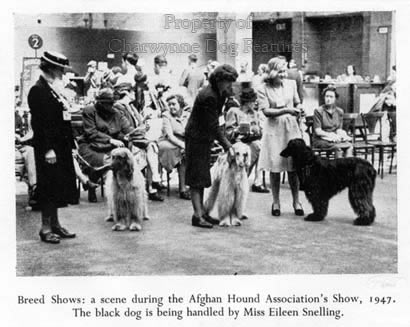
Structure and Regulation
The field trial movement expanded significantly in the first part of the 20th century. In 1901, meetings were few; by 1913 they had increased to 27 and by 1938, as many as 80 were held. The early years of the twentieth century saw too more structure and regulation in the gundog world. In 1907 the Kennel Club instituted field trials for retrievers, after earlier attempts had led to The Retriever Society being founded in 1900. About this time, dogs from the same litter could be registered as a Lab if smooth-coated and a Flat-coat if wavy-coated. So, in 1916, cross-bred retrievers were allowed to be registered; 93 were registered as such in 1923. There was a place too for 'gamefinders', allowing dogs of any ancestry but with some retriever blood to be registered. The English Springer Spaniel was recognised as a breed in 1902; breed clubs began to appear, with the Curly club starting in 1933 and the Goldie's club forming in 1912. 1904 was an important year for Labradors, when Holland-Hibbert's Munden Single received a Certificate of Merit, on the first appearance of Labs at a field trial.
One regrettable feature in spaniels was the 'bassetization' of Field Spaniels, which produced low-slung specimens with long backs and shortened legs and was only rectified when the Field Spaniel Society set to work. Until the formation of the Irish Water Spaniel Association in 1926, little had been seen of these dogs in public and it was the policy of the newly-formed body to organise field trials to test their breed. The British Gordon Setter Club came into being at the end of the 1920s, which did much to revive interest in the breed.
Although Irish Setters have long enjoyed a reputation as working dogs, they had not been run much at English field trials until Mrs F Nagle founded a kennel of them at Sulhamstead, near Reading. In 1929 and 1935 her Sulhamstead Brantome d'Or won the KC Derby for Pointer and Setter puppies, with her Carrie d'Or coming 4th in 1932 and Bluff d'Or third in 1933. The breed's registrations went from 308 in 1921 to 1,359 in 1927, such was the interest in the pet/show world. It was paradoxically, the field trial world which kept the English Setter going. From 1911 until 1925, Capt Gilbert Blaine used his English Setters to work with trained falcons near Caithness. He needed to have fast wide rangers that had really good 'long' noses and never made false points.
In both 1913 and 1922, Capt Blaine killed over 200 brace of grouse with his peregrines. Later on, Lorna Countess Howe added English Setters and Pointers to her strong kennel of gundogs. It was largely through her influence that Labradors have enjoyed more fame as dual purpose dogs than any other gundogs. The Labrador Retriever Club was founded in 1916, with her as its secretary; she did her own breaking and was the first of her gender to judge a KC trial. Registrations of this breed went from 140 in 1910 to 1410 in 1927 and have never looked back. The English Springer too triumphed, going from 70 in 1910 to over 1,320 in 1927. In 1950, over 4,000 Labradors and over 2,000 English Springers were registered. In 1999, over 33,000 Labradors and over 12,000 Springers were registered with the KC. These two gundog breeds have truly been the sporting breeds of the last century.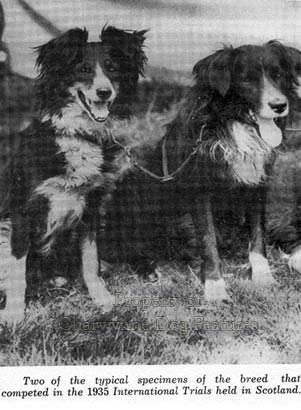
Continental Influences
But the post World War II sportsman had a new shooting style to pursue and a different type of gundog to support it. Army officers stationed in Germany saw the all-rounders, the HPR breeds, and liked what they saw. With little or no experience of these multi-purpose gundogs, these expatriate sportsmen, using mainly German short-haired pointers, became very impressed by their capabilities and realised the potential of a pointer-retriever. This breed was imported into America similarly after the Great War and so became established there so much earlier. For us, it was just another example of our bringing talented sporting dogs across the channel, a timeless exercise. This time however, unlike previous centuries, their blood would be kept distinct and not used to strengthen the performance of native stock. In the gundog world, this, together with the gundog breeds entering the pet market in unprecedented numbers, was a significant legacy of the first fifty years of the twentieth century. The Second World War devastated many breeds but also led the gundog registers opening up to new breeds from the Continent.
With the HPRs from Germany leading the way from the 1950s, (in 1953, 34 Weimaraners were registered with the KC; by 1983, a total of 7,088 had been registered) the all-round gundogs from other mainland European countries soon followed. The second half of the twentieth century saw these talented dogs establish themselves here, whilst three of our native breeds, the Labrador Retriever, the Cocker and the English Springer Spaniel went from strength to strength. This may have been to the detriment of less-favoured native gundog breeds, like the Field, Sussex and Clumber Spaniels, the Curly-coated Retriever and the Pointer. By the end of the nineteenth century, we had lost our native water spaniel, failed to preserve the distinctive milk-white Llanidloes Setter and overlooked the Irish Red and White Setter as a distinct breed. At the end of the twentieth century, there were worrying signs that we might be losing the less fancied spaniel breeds from our breed lists and shooting fields.
The Field Spaniel rallied from only 2 registrations in 1960, to 30 in 1970, 78 in 1980 to 121 in 1990. The Sussex Spaniel recovered from only 13 registrations in 1960 to achieve 127 in 1990. The Irish Water Spaniel too steadily gained ground, with just over 30 in 1960 and 1970 to 144 in 1990. Meanwhile Cocker Spaniel registrations doubled in the 30 years between 1960 and 1990, those of the Labrador quadrupled and the English Springer's increased tenfold. But in those 30 years the Weimaraner figures went from 70 to over 1800, and over 100 Brittanys, GWHPs, Vizslas, Large Munsterlanders and Italian Spinoni joined the lists. I get the impression that more HPRs are worked proportionately than our native gundog breeds. I do hope one of our unsung unspoiled quite admirable gundog breeds, the Curly-coated Retriever isn't allowed to disappear, its registrations are worryingly low. Do we really need a further 45,000 Labradors each year?
Foreign Arrivals – Domestic Neglect
A hundred years ago, British shooting men would have scoffed at the idea of a German pointer eclipsing our Pointer, within the coming century, but it's happened. Styles of shooting have changed and gundogs are now owned by a wide range of people; they were once the preferred breeds of country dwellers and landowners, not any more. The key question is not about preferences or popularity, but whether these attractive talented dogs are being bred wisely. All these gifted gundog breeds were developed by knowledgeable dedicated often inspired breeders. Sometimes misguided cliques have half-ruined a breed, as the once-bassetized Field Spaniel and the heavyweight Clumber Spaniels exemplify. Happily the Field is now soundly bred and the Working Clumber fraternity have done a great job with their breed. But unwise exaggerations and worrying aberrations do still crop up across a wide range of anatomical features. We need to continue the best achievements of the 20th century whilst correcting any excesses.
Over-furnished setters, Cockers with overlong ears, Clumbers with red-raw eye-rims, Labradors with Rottie heads, Golden Retrievers featuring a white coat, English Springers resembling liver and white Cockers more than their own breed (mainly in working stock, admittedly), a lack of substance in Pointers and most regrettably the disturbing presence of upright shoulders and a lack of drive from the hindquarters - these are all betrayals of the gundog heritage we inherited. The braver (or better-informed) judges pick up such points and record them in their post-show reports; but who is listening? Temperament too is rarely bred for, as a desired feature, usually an expectation rather than a top priority, despite most pups going to pet homes. Will the 21st century witness the loss too of working instincts, neglected in the second half of the 20th century, in our gundogs?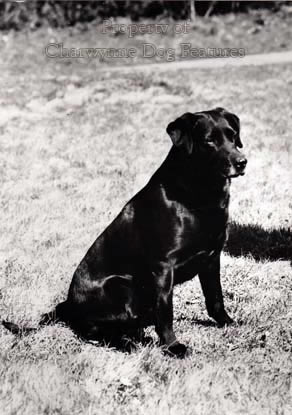
Changing Tastes
It is interesting to compare the KC registrations of gundog breeds at the beginning of the 20th century and the end. In 1908, 15 breeds were recognized, as well as ‘interbred’ and ‘crossbred’ retrievers; in 1999, 33 breeds were recognized, 11 of them HPR breeds. Only purebred gundogs featured. Of the 15 gundog breeds listed by the KC in 1908, their fortunes were markedly different by the end of the century; by breeds, with the 1908 figures first and the 1999 ones next, the list shows: English Setters 240 against 627, Gordon Setters 27 against 317, Irish Setters 189 against 1,391, Pointers 152 against 824 , Curly-coated Retrievers 163 against 90, Flat-coated Retrievers 474 against 1,315, Golden Retrievers 0 against 12,730, Labradors 123 against 33,398, Clumber Spaniels 182 against 105, Cockers 535 against 13,445, Field Spaniels 286 against 75, Whiptails 38 against 72, English Springers 46 against 12,409, Welsh Springers 38 against 522, and Sussex Spaniels 19 in 1908 and 89 in 1999. The days of the companion gundog had very much arrived. Shooting needs had changed and certainly the ratio of gundogs worked to gundogs not worked by their owners had changed forever. The owners of companion dogs have no incentive to test their dogs’ instinctive skill; show fanciers do not win rosettes for their dogs’ scenting, marking or retrieving talents. This affects the anatomy desired in their dogs.
Damning Critiques
It is dispiriting to read extremely worrying comments on gundogs, in the ring at championship shows, by approved judges, on dogs clearly entered by their proud owners as potential winners. Most of these seriously flawed dogs are bred from; it is a chilling thought. I have in mind comments like these from gundog judges in 2006, on entries based on 20th century stock: Golden Retrievers; '...many exhibits were unbalanced, too straight in shoulder and long in body...'; ...'many lacked substance and strength in quarters...' and, 'I was disappointed in the dogs' heads, some far too big and heavy...'. Gordon Setters; 'Some exhibits who looked very good stacked, let themselves down on movement and quite a few lacked muscling.' GWHP; 'Movement leaves a lot to be desired...'; Weimaraner; 'I am saddened to say that I was bitterly disappointed by the limited number of exhibits that carried the true qualities in type, construction and soundness that makes up this beautiful aristocratic breed...'; Welsh Springers; '...too many dogs were lacking the correct extension and return of the foreleg underneath the body when viewed on side movement.' Some of these flaws went uncorrected in the late 20th century and these are not minor matters.
And it gets worse! Take Labradors, a very uncomplicated breed: critiques in 2006 include these comments: 'Front movement remains a cause for considerable concern', '...what is happening to our wonderful Labrador head?', '...we do need to give our serious attention to the front construction, particularly the numerous short and upright upper arm that the breed currently displays.' But a recently introduced gundog breed, the Italian Spinone also records comparable problems, judges writing: '...construction is not so good, far too many dogs were steep in shoulder and short in upper arm...', and, '...wealth of dogs very poor in front...with steep short upper arms...'. Do contemporary gundog breeders appreciate the link between sound construction and correct movement? Is the legacy of the 20th century in gundogs an unfortunate, however gradual, move away from the ability to function in the field towards a rosette-chasing desire to concentrate on cosmetic appeal in the show ring? That is an honest enquiry not a stern accusation. In the conclusion, I make wide-ranging recommendations for an improved future for our gundog breeds.
National Responsibility
The immense rise in the popularity of pedigree dogs in the 20th century, with 22,000 registered in 1921 and, by 1999, around 80,000 gundogs alone being registered each year, has not been all good news for the dogs themselves. As sporting dogs are increasingly denied an outlet by today's urban activists, all those who care about our superb gundog heritage need to be watchful. These superlative breeds came to us after the devotion and breeding skill of past enthusiasts. They bequeathed to us handsome dogs with immense field capability based on sound construction and an innate desire to work. We surely owe them and these fine breeds the same commitment. The twentieth century allowed us the choice of either capitalizing on the remarkable legacy of gundog men such as Laverack, Llewellin, Shirley, the Duke of Gordon, Arkwright, Farrow, McCarthy, Fuller and the Earl of Malmesbury or abandoning our renowned gundog breeds to the fashions of the times. It is always worth a study of the gundogs of a century ago to judge whether we have kept faith with those devotees who bequeathed us these superb dogs. The bitches produce the pups, we design the litter.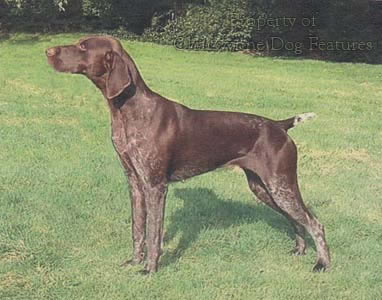
“It is not necessary, in a work of this kind, to discuss the vexed question of the influence of canine exhibitions on the sporting dog. Much good has been done by these; but alas! also much evil. The sporting dog, however, has suffered less than most other breeds, and, on the whole, in the writer’s opinion, distinct benefit has accrued, except in the case of the spaniel breed. This is due to the fact that dogs of other breeds have not been tampered with to the same extent as the spaniel has been by ‘fanciers’, whose handiwork is seen in the numerous grotesque creatures which appear on the bench, and, with considerable difficulty, are able to walk a few times round the judge’s ring. With these, however, the gamekeeper has nothing to do. The breed is right enough, but by selection a non-sporting class has produced an animal unfitted for work owing to the exhibitors’ want of knowledge and the apathy of other classes. One must remember, however, that those are selected specimens, and that it is possible to find animals of the same breed which are quite fit and able for field work.”
Sir Peter Jeffrey Mackie, writing in his The Keeper’s Book, Foulis & Co., 1924.
“In the modern world of driven shoots and breech-loading shotguns, pointers and setters are something of an anachronism: a living, and sometimes working, reminder of past times when shooting was a more leisurely and less commercial pursuit. Our native game birds, the grey partridge on agricultural land and the red grouse on the moor, were the main sporting quarries in those days and they were shot over pointing dogs. The time of the big battue, the reared pheasant and the commercial shoot were yet to come, though the dual pressures of technological innovation and Victorian fashion would eventually bring about a decline in popularity of the pointing breeds as working dogs.”
David Hudson, writing in his Working Pointers and Setters of 2004, Swan Hill Press.